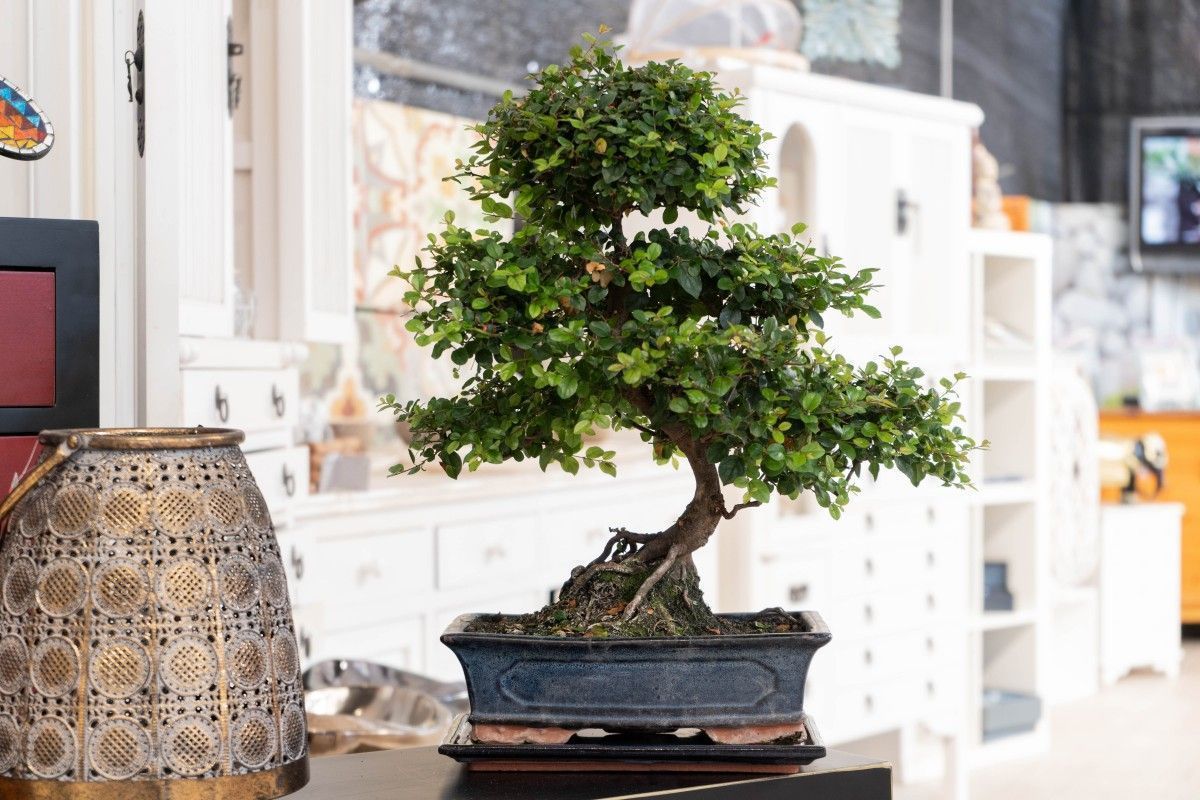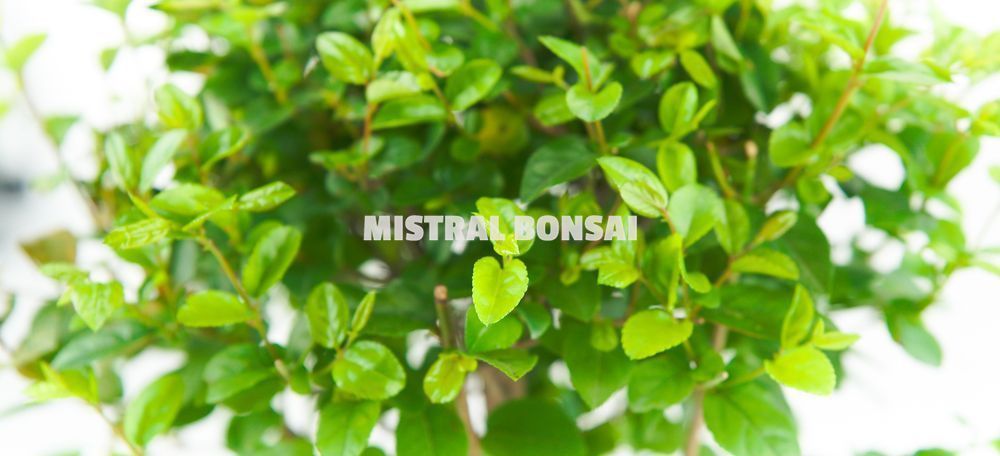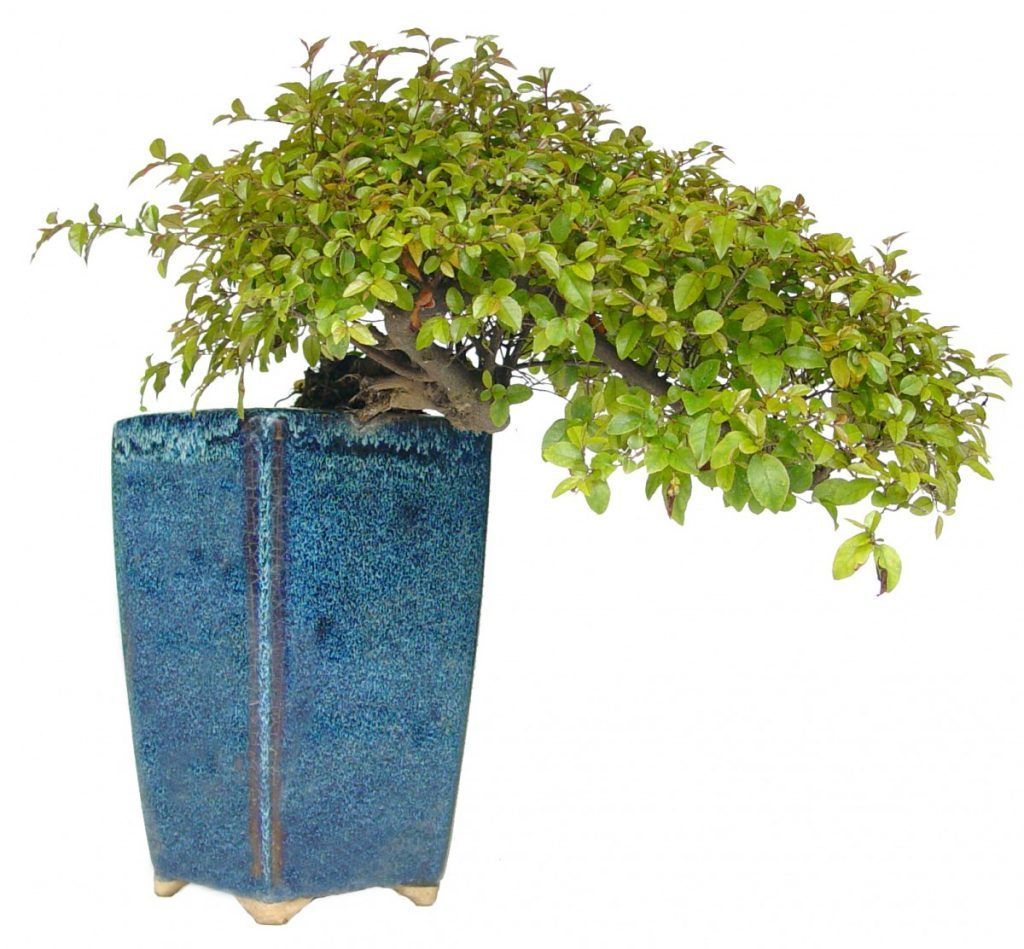The Chinese plum, a classic of the indoor bonsai

Sageretia theezans or also known as Chinese plum is a very popular species in bonsai. Wouldn’t you love to have one in your collection? Its small leaves and blue berries make it a very special tree. In this article I explain everything you need to know about it, how to take care of it and enjoy it.
Sageretia is a tropical evergreen plant in the Rhamnaceae family, native to southern China. It is very popular for its use as a bonsai due to its small leaves.
In spring, its blooming is not very conspicuous, and its fruit is blue-violet drupes. It has shiny little leaves and a smooth trunk.
Where should the Sageretia be located?
We must give constant values of temperature and humidity to this tropical bonsai. This is why we classify them as indoor bonsai, as such we can locate them inside our home. It needs a lot of sunlight. It is important to place it near a window (less than 1m away).
If any factor changes in the environment, our bonsai will suffer and could die. Their deterioration will begin by yellowing the leaves and drying the branches of the apex.
It does not like low temperatures, so in winter it must be protected from the cold indoors or in a greenhouse, with plenty of light and at temperatures above 12ºC.
Always with all our indoor bonsai we will be careful to place it away from heat sources such as TVs, stoves, ovens, etc. Also make sure that the air conditioning currents do not affect it, since they are very harmful to your bonsai.
Watering and fertilising a Sageretia bonsai
Like all indoor bonsai (and of tropical origin) it likes the humidity of the environment. It likes to be watered frequently but without puddling the water. So, it should be planted in a substrate that drains very well but retains some humidity.
Its roots grow better and stronger if we let the substrate gradually dry out and just when it is almost dry, we water it again.
The Chinese plum does not assimilate well the waterlogging or the drought in the substrate.
Do not miss this video on watering and the location of an indoor bonsai. Surely it will clarify many doubts!
The nutrition of our bonsai is a key element. From the beginning of spring until the summer heat rises, we must use a nitrogen-rich fertiliser. We recommend the use of an organic fertiliser like Hiryo Gold together with the Nutribonsai.
In summer when the temperature is above 30 ºC we will reduce fertiliser in half.
When the temperature drops, try to fertilise it using an organic product that is rich in phosphorus and potassium.
In winter we will fertilise once a month with Nutribonsái.
What bonsai techniques can I apply to a Chinese plum?
You can prune it at any time of the year and you can cut the shoots that have gone out of silhouette at any time.
We will prune the buds when they lengthen too much, cutting 2 pairs of leaves to force a more delayed and dense sprouting.
The thickest branches that do not enter the tree design can be cut in spring or late winter, when the sap flow is lower.
The wiring can be done at any time of the year. If you need to make a very large bend, do it preferably in spring when there is circulation of sap.
In the event that you need to do a defoliation, it must be done after the new shoots have finished coming out. Middle way through summer.
And the transplant?
You can transplant every 2 or 3 years. In spring.
We recommend the use of Terrabonsai, a substrate specially developed by Mistral Bonsai technicians. Helps keep your tree healthy, with the necessary moisture retention and proper drainage for its development.
Very important, when transplanting do not cut more than 1/3 of the roots, since if you go over the tree will suffer and end up dying.
At the end of the transplant, place in a container Vitabonsai diluted in water and make an irrigation by immersion of about 5 minutes. This invigorating will help your bonsai to recover more quickly from the stress of the transplant. Continue to use it for the next month according to the recommended doses in the package leaflet.
If you have never performed a transplant, here is a step-by-step video.
The most common pests of Sageretia
Its main weaknesses are the red spider, the white fly and some fungi, especially in summer.
It is best to use insecticides and fungicides preventively to avoid contagion. You can do preventive treatments, at the beginning of spring, at the beginning of the summer and in the middle of autumn.
What styles of bonsai can we make with this tree?
With this tree we can make bonsai of the Moyogi (informal) Sakkan (Inclined), Kengai (Waterfall), Hang Kengai (Semi waterfall) and Yosue (Forest) style although I have seen sageretias in other styles of bonsai, these are the most common.
This bonsai is one of the classics that you must have in your collection.
Make sure that its values are stable and constant, and you will have a very healthy tree that will add a touch of class to your collection.
Until next time.
You may also be interested in…
About the Author
Mistral Bonsai
In Mistral Bonsai we are a communication team, technicians and masters committed from the first day to disseminating the wonderful art of bonsai. A world that offers many things to share. We believe that a bonsai is a tree with a soul, unique and unrepeatable. Another of our most essential pillars is, how could it be otherwise, our close commitment to the preservation of the environment and nature.
Categories
Bonsai cultivation and care (60)
Bonsai gift (2)
Bonsai pests and diseases (7)
Bonsai repotting (3)
Bonsai species (1)
bonsai substrates (2)
Bonsai summer (1)
bonsai tools (1)
Bonsai work (13)
Ceramic pots (3)
Chinese culture (1)
Chinese culture (2)
Coniferous bonsai (2)
Conifers (1)


